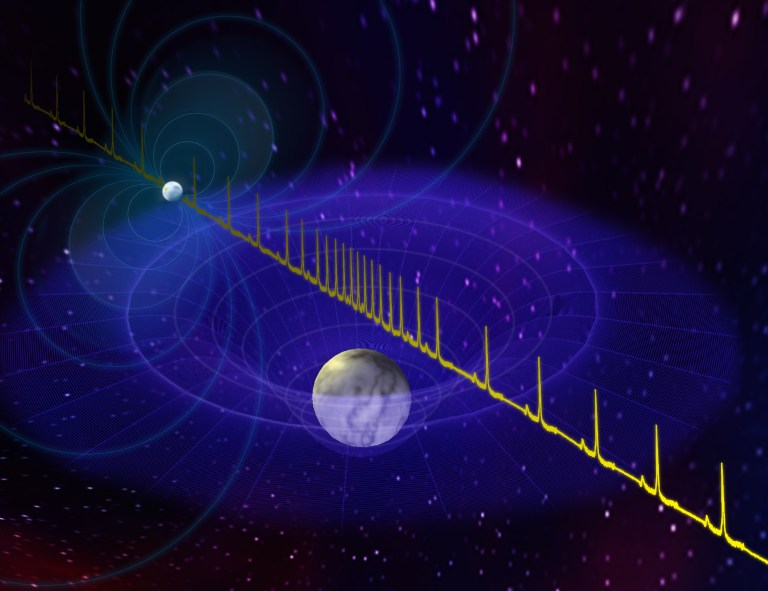Researchers have recorded the most massive neutron star on record, weighing as much as 2.17 Suns but packed into a city-sized sphere just 30 kilometers (19 miles) across. This astonishingly dense object is seemingly at the limits of the maximum mass attainable by neutron stars before they collapse into black holes. Further study of the hefty star should help scientists better understand the extreme physics within these unusual stellar remnants, whose internal conditions cannot be recreated on Earth. See also: Black hole; Neutron star; Stellar evolution

A research team used the Robert C. Byrd Green Bank Telescope in West Virginia, United States, to study the neutron star, which is actually a pulsar, designated J0740+6620. Pulsars are neutron stars that rapidly spin and send out beams of radiation that sweep across the cosmos, rather like lighthouses. The pulsar in question is part of a binary system with another type of star called a white dwarf, which is the remnant of a normal-sized star such as the Sun. (Neutron stars are instead the leftovers of particularly massive stars that likely had a minimum of ten times the mass of the Sun and exploded as supernovae.) See also: Pulsar; Supernova; White dwarf star
In the case of the pulsar J0740+6620, its beams experience a slight time delay (of approximately 10 millionths of a second) in their trip to Earth when they happen to pass through the gravitational field of the white dwarf. This effect, the Shapiro Delay, is a consequence of the theory of general relativity, which describes massive objects as warping the space around them. That warping requires the pulsar beams to travel a small extra distance than they otherwise would, thus producing the delay. The degree of the delay is determined by the mass of the intervening object—in this instance, the white dwarf—and once that mass is known, calculating the mass of the pulsar in the two-body system becomes straightforward. See also: Gravitational redshift; Relativity
With the mass figure now in hand, astronomers can refine their models of neutron stars. These inadequately understood objects are so-named because their potent gravity crushes their protons and electrons together, fusing them into neutrons. The resulting exotic astrophysical object is composed almost entirely of the neutrally charged subatomic particles and in many ways is akin to a colossal atomic nucleus. The density of neutron stars is staggering, with a sugar cube-sized amount of material equating to a mass of about 100 million tons if placed in Earth's gravity. Yet black holes are even denser. Past a critical mass threshold, a neutron star gravitationally collapses further into an object whose gravity is so strong that even light cannot escape. With its 2.17 solar masses, J0740+6620 is right at the theoretical limit of this transition, establishing it as an important natural laboratory to more deeply study gravitational physics. See also: Density; Electron; Gravitational collapse in aged stars; Neutron; Proton





